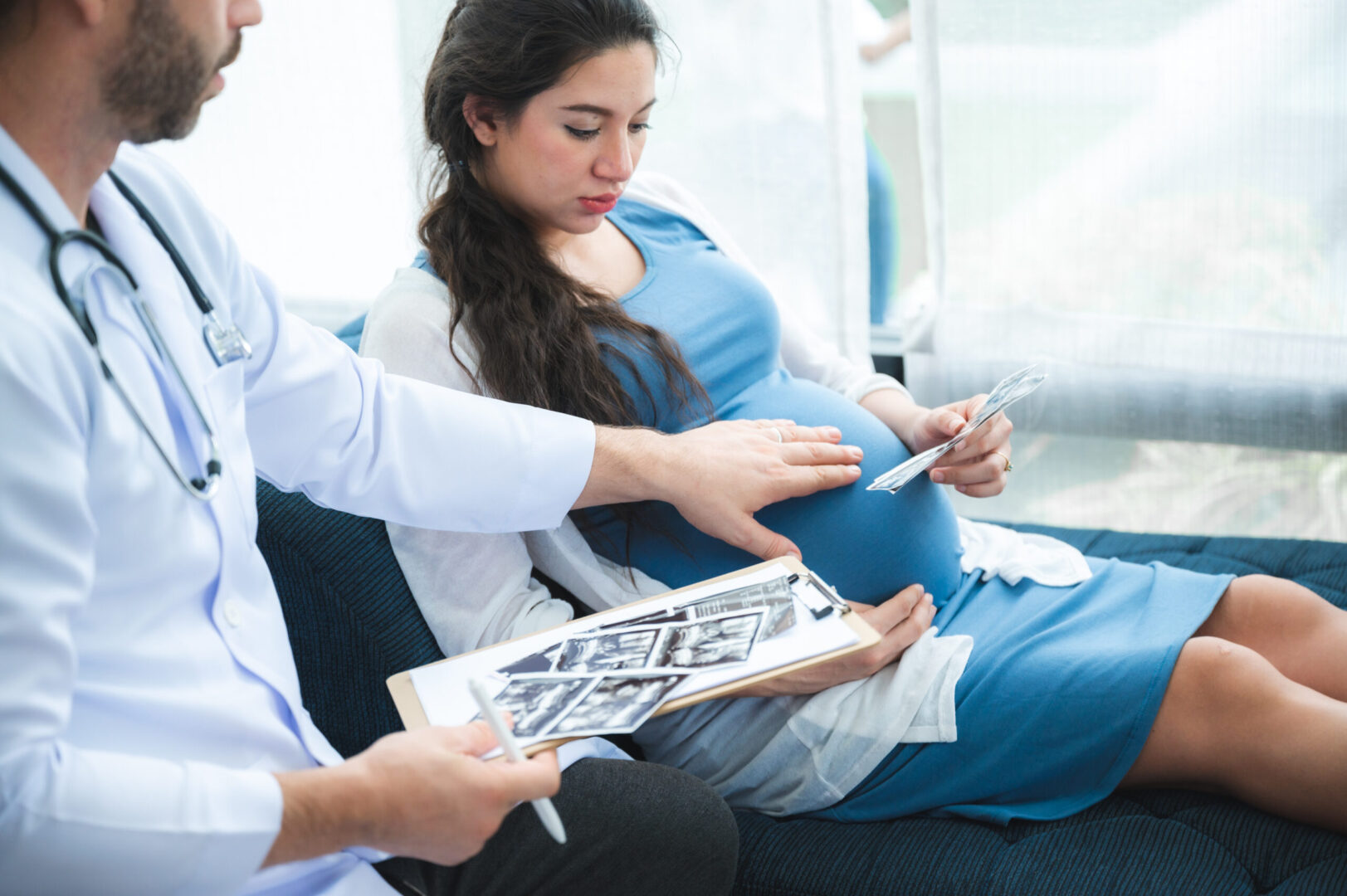
What is placenta praevia?
The placenta is an organ that develops at the same time as your baby. It is attached to the lining of your uterus (womb) during pregnancy.
The placenta allows for oxygen and nutrients to pass from you to your baby. It also makes hormones that support your pregnancy.
Sometimes the placenta develops in the lower part of your uterus. It usually moves up by the third trimester as your womb grows. But in about 1 in every 200 pregnancies it stays in the lower part of the womb.
Placenta praevia is when your placenta stays low in your uterus towards the end of pregnancy. It might cover part or all of your cervix. If you have placenta praevia you will usually have to have a caesarean section.

What are the symptoms of placenta praevia?
The most common sign of placenta praevia is sudden bleeding from your vagina. This can happen during the second and third trimester of pregnancy. This might happen spontaneously or after sex.
You may also have:
- cramping in your uterus
- bleeding during labour
There can be reasons for bleeding other than placenta praevia.
You should talk to your doctor or midwife if you have any bleeding during your pregnancy. If the bleeding and pain are bad.
What causes placenta praevia?
There is no known cause for placenta praevia.
Some people have a higher risk of developing placenta praevia. These include:
- being over 35 years old
- having had a caesarean section in the past
- smoking or taking drugs
- having twins
- getting pregnant using fertility treatments
Placenta praevia might also happen due to scar tissue in your womb.
When should I see my doctor?
You should talk to your doctor or midwife at once if you have any bleeding from your vagina while you are pregnant.
The cause of the bleeding might be placenta praevia, but there are many other causes of bleeding during pregnancy.
How is placenta praevia diagnosed?
A low lying placenta might show up on your ultrasound scan at 18 to 20 weeks of pregnancy. If the scan shows that you may have placenta praevia, you’ll probably have another scan at about 32 weeks.
For most women, that second scan will show the placenta has naturally moved up. This happens as your uterus expands during pregnancy. Sometimes the placenta moves up between the second scan and your baby’s due date.
How is placenta praevia managed?
There’s nothing that can be done to move the placenta, you must wait to see if the placenta moves naturally. This will happen in most people. If your placenta doesn’t move you might have to have a caesarean section.
You may be advised:
- not to do strenuous exercise or other activities
- to eat a healthy diet, including iron-rich food
- to get lots of rest
If you have placenta praevia and have vaginal bleeding during your pregnancy you may need to be admitted to hospital. This won’t stop you from bleeding, but you can get help quickly if needed.
Can placenta praevia be prevented?
There is nothing you can do to prevent placenta praevia.
What are the complications of placenta praevia?
Most women with placenta praevia don’t have any complications. But complications can be serious and dangerous to you and your baby.
Complications can include:
- severe blood loss
- blood transfusion
- emergency caesarean
- premature birth
- hysterectomy (removal of the uterus)
Placenta praevia can be associated with placenta accreta.


